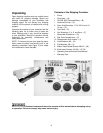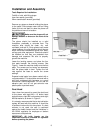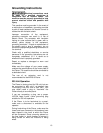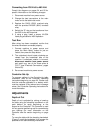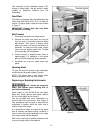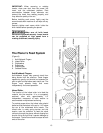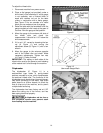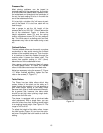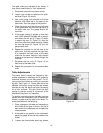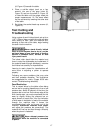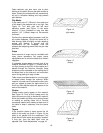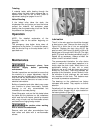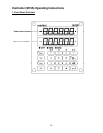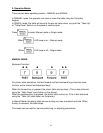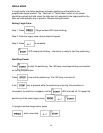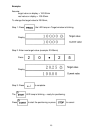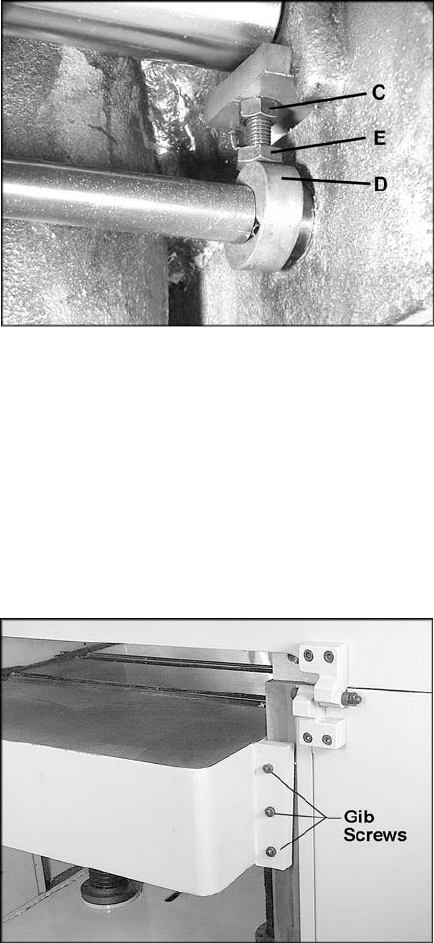
16
The table rollers are adjusted at the factory. If
they should need further or “fine” adjustment:
1. Disconnect machine from power source.
2. Loosen lock handle and position the quick-
set lever (Figure 12) to zero.
3. Use a dial gauge (not provided) to find the
distance from table top to the apex of the
table roller. Zero the gauge at this position.
4. Place the gauge over the extreme right side
of the table roller and find the high point of
the table roller arc. The gauge should still
read zero.
5. If the gauge reading is greater or less than
zero, reach beneath the table with a wrench
and loosen the hex nut (C, Figure 13) which
is above the cam (D, Figure 13) near the
end of the roller that needs adjusting. Rotate
the hex cap screw (E, Figure 13) until the
gauge reads zero.
6. Repeat the process for the left side of the
table roller, and then recheck the right side.
It is important that both ends of the table
rollers be the same height to help prevent
skewing of the board as it feeds through the
machine.
7. Re-tighten the hex nuts (C, Figure 13) on
both ends of the table roller.
8. Repeat the procedure for the second table
roller.
Table Adjustments
The planer table is raised and lowered by twin
screws supported on bearings, and is guided by
machined surfaces on the side panels. The fit-
up to prevent the table from rocking is controlled
by gibs. See Figure 14. These gibs should be
adjusted individually using the three gib screws
provided so that the ways are lightly contacting
on all four surfaces. The gibs should be tight
enough to prevent rocking or movement of the
table when the planer is in operation.
To perform accurate planing the table must be
parallel with the cutterhead. Lack of parallelism
results in a taper over the width of the board. To
check parallelism do the following:
1. Place a gauge on the table and contacting a
knife insert at the apex of its arc, Do this at
each end of the cutterhead and compare the
measurements.
2. If the table is not parallel to the cutterhead,
place the gauge at the end that needs to be
raised.
3. Loosen the three socket head cap screws
Figure 13
Figure 14



